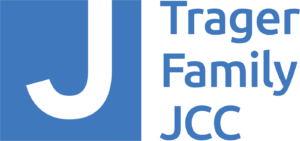[by Shiela Steinman Wallace]
On December 6, 1987, 55 members of the Louisville Jewish community traveled to Washington, D.C. to participated in Freedom Sunday. The event, which included a March on Washington, drew 250,000 Jewish activists from across the United States, all demanding that Soviet Premier Mikhail Gorbachev allow Jewish people to leave the country.
“Let my people go!” people chanted as they walked on the National Mall carrying signs bearing the same message.
Michael Shaikun, who was president of the Jewish Community Federation of Louisville at the time recalled, “It was at a time when we wanted to send a message not just to Gorbachev and the Soviets, but to our own leadership, about the importance of the Soviet Jewry issue.
“I remember we had a number of young children who accompanied us,” he added, “and how important it was for them to see their parents standing up for things that were important.” The group also included students from both the High School of Jewish Studies and Hillel.
Shaikun was proud that “a small city like Louisville was able to put together that many people who were willing to incur the expense, give up the time and stand out in the cold to be seen and heard. We filled the National Mall. It was impressive.”
Being part of such a large group helped participants realize that they weren’t alone, “and we came home feeling that we had done something that was important,” he said.
Slava Nelson, now senior adult program director at the JCC, lived in Kiev, Ukraine in the Soviet Union at the time. “We knew that there was an underground movement with people like Natan Sharansky,” she said, “and they were trying to do all kinds of petitions” and to raise awareness that there were Jews behind the Iron Curtain; however, most Soviet Jews really didn’t understand the extent of the activity beyond their borders.
“My family were refuseniks,” she said. In 1979, there was a brief glimmer of hope that Jews would be allowed to leave the Soviet Union, she recalled. So a number of Jewish families, including her own, sold everything they could and prepared to leave.
“Then they shut the gate. My parents were retirees, but my brother and I were working. They immediately fired us because we were unreliable people and we couldn’t find a job. A lot of Jews were stuck in this kind of situation.”
For a while it seemed hopeless. Then, Nelson observed, “Gorbachev realized that if he wanted to be accepted as a world leader, he had to do something to put him on the same level with other world leaders.
“Not many people knew about the March on Washington,” she continued. “We lived in a very closed society.”
Contact with the outside world was very limited, and what little news they got came from radio news from London.
At the same time, inside the Soviet Union, the underground group of Jews never stopped working and advocating for freedom for Soviet Jews.
The March on Washington was only one small part of an overall effort to free Soviet Jews, but is was a monumental moment in American Jewish history and was one of the steps that led to the opening of the gate for Soviet Jews in 1989.
The first Jews who were allowed to leave were those who qualified for family unification with relatives outside the Soviet Union. Slava’s family was part of the second group – refuseniks – refugees who had no place in Soviet society.
For her, the process of preparing the documents started in August 1990, and they left on January 12, 1991. They came to Louisville because the Federation here agreed to accept and resettle refugees and HIAS, the Hebrew Immigrant Aid Society, assigned them to Louisville.
Over the next few years, Community will mark other significant anniversaries in this epic struggle with stories reflecting on what happened 25 years ago. We’ll also touch base with some of the people involved in resettlement and those who came from behind the Iron Curtain to make Louisville their home.


